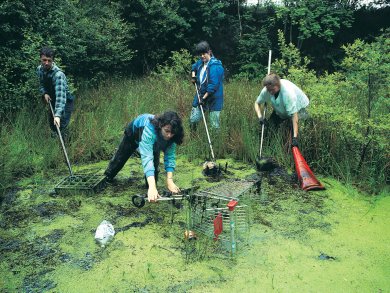In aquatic systems, selenium can bioaccumulate in higher organisms, leading to birth defects and reproductive problems in birds and fish. Selenocyanate (SeCN–) has always been considered to be a man-made compound and discharged into the environment from industrial sources such as petroleum refineries and gold and silver mines.
Dirk Wallschläger and co-workers, Trent University, Ontario, Canada, have shown that selenocyanate can also be produced by the common fresh water algae, Chlorella vulgaris. The team exposed the algae to environmentally relevant concentrations of selenium in the form of selenate, selenite, or selenocyanate and monitored its uptake. Significant quantities of selenite and selenocyanate were seen to be produced upon uptake of selenate. Selenocyanate was also shown to be released by the algae back into the growth medium, meaning it may not be a suitable indicator of contamination of an area.
- Release of Reduced Inorganic Selenium Species into Waters by the Green Fresh Water Algae Chlorella vulgaris
D. Bobbie, D. Simmons, D. Wallschläger,
Environ. Sci. Technol. 2011.
DOI: 10.1021/es103337p




